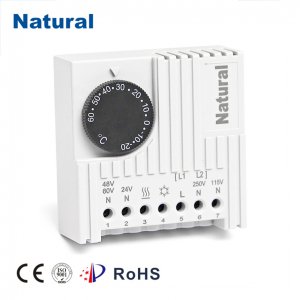文章:

Thermostats play a crucial role in regulating the temperature of our homes and workplaces. Among the various types of thermostats available, 24V thermostats have gained popularity for their versatility and energy-efficient features. In this article, we will delve into the world of 24V thermostats, exploring their functions, benefits, and applications. What is a 24V Thermostat? A 24V thermostat, also known as a low-voltage thermostat, is a device used to control heating, ventilation, and air conditioning (HVAC) systems in residential and commercial settings. Unlike line-voltage thermostats that directly control the power supply, 24V thermostats operate on a low-voltage circuit, typically 24 volts. This lower voltage not only enhances safety but also offers several advantages. Key Features and Benefits Energy Efficiency: One of the primary advantages of 24V thermostats is their energy efficiency. They consume minimal power, helping homeowners save on energy bills while reducing their carbon footprint. These thermostats use power only when making adjustments, ensuring that they do not contribute to wasteful energy consumption. Compatibility: 24V thermostats are compatible with a wide range of HVAC systems, including central heating and cooling units, heat pumps, and multi-zone systems. This versatility makes them suitable for various applications and ensures they can meet diverse heating and cooling needs. Precise Temperature Control: These thermostats offer precise temperature control, allowing users to set and maintain their desired indoor climate. Many 24V thermostats feature programmable settings that enable users to create customized heating and cooling schedules, optimizing comfort and energy efficiency. Remote Access: With the integration of smart technology, many 24V thermostats can be controlled remotely through smartphone apps or web interfaces. This feature enables users to adjust the temperature from anywhere, ensuring a comfortable environment upon arrival and reducing energy waste when away from home. Applications 24V thermostats find application in a wide range of settings: Residential Homes: These thermostats are commonly used in homes to control heating and cooling systems. They allow homeowners to create energy-efficient schedules and maintain comfortable indoor temperatures year-round. Commercial Buildings: In commercial settings, 24V thermostats are crucial for maintaining comfortable working conditions. They are often integrated into building automation systems to optimize energy use and reduce operational costs. Industrial Facilities: Some industrial processes require precise temperature control, and 24V thermostats play a role in ensuring optimal conditions for manufacturing, storage, and other applications. Hospitality Industry: Hotels and resorts use 24V thermostats to provide guests with a comfortable environment while efficiently managing energy consumption. Healthcare Facilities: In healthcare facilities, maintaining specific temperature and humidity levels is critical for patient comfort and equipment operation. 24V thermostats help achieve these goals reliably. Conclusion The versatility and energy-efficient features of 24V thermostats make them a preferred choice for both residential and commercial applications. They provide precise temperature control, compatibility with various HVAC systems, and the convenience of remote access. As technology continues to advance, 24V thermostats will likely play an increasingly important role in creating comfortable and sustainable indoor environments. Whether you are a homeowner looking to save on energy costs or a business owner aiming to improve operational efficiency, a 24V thermostat might be the perfect solution for your heating and cooling needs.